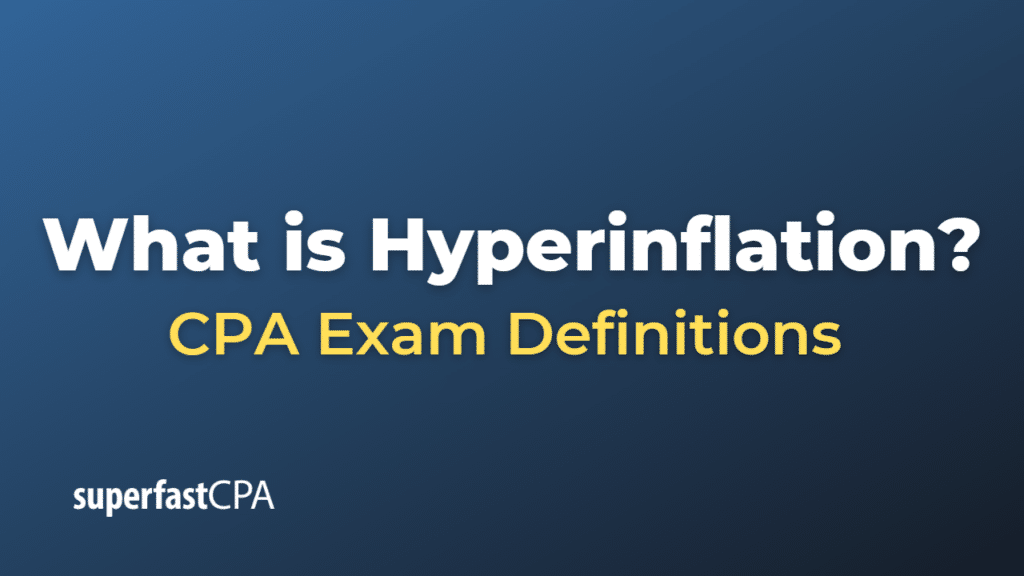Hyperinflation
Hyperinflation is a term used in economics to describe an extremely high and typically accelerating rate of inflation. There isn’t a universally accepted numerical definition to hyperinflation. However, the economist Philip Cagan, in his influential book “The Monetary Dynamics of Hyperinflation,” defined hyperinflation as monthly inflation rates exceeding 50%.
Hyperinflation usually occurs when there’s a significant increase in the money supply that isn’t supported by economic growth. This can happen in times of severe economic crisis, such as during war, when governments print money to finance their activities, or in periods of extreme uncertainty when confidence in the economy or its governing bodies collapses.
When hyperinflation occurs, the value of the local currency drops dramatically and prices escalate rapidly as people and businesses attempt to compensate for the loss of the currency’s purchasing power. This can lead to economic instability, and it often has severe economic and social consequences.
One of the most cited examples of hyperinflation occurred in Zimbabwe in the late 2000s, when the monthly inflation rate at one point reached an astronomical 79.6 billion percent. Another well-known example occurred in Germany in the 1920s (Weimar Republic) after World War I, where the highest denomination of banknote issued was 100 trillion Marks. In both cases, the rapid devaluation of the currency led to economic collapse.
Example of Hyperinflation
One of the most famous examples of hyperinflation occurred in Germany in the early 1920s during the Weimar Republic, shortly after World War I.
After losing World War I, Germany was required by the Treaty of Versailles to pay hefty war reparations. To meet these obligations, Germany started to print more money. As they did this without the support of gold reserves or corresponding economic growth, the value of the Mark, Germany’s currency, began to fall.
As the value of the Mark plummeted, the cost of goods and services began to rise as people lost confidence in the currency’s worth. By November 1923, the situation had escalated to the point where it took 200 billion Marks to buy a loaf of bread. At the start of 1921, that same loaf of bread would have cost just 1 Mark.
In other words, the money became so worthless that people needed a wheelbarrow of cash just to buy a loaf of bread. This caused severe economic and social problems. The savings of the middle class and those on fixed incomes were wiped out, which led to widespread discontent and contributed to political instability.
Finally, the government introduced a new currency called the Rentenmark, backed by real estate, which helped to stabilize the situation and eventually ended the hyperinflation period.
This example illustrates how hyperinflation can decimate the value of money, disrupt an economy, and lead to widespread social and political issues. It serves as a stark warning of the dangers of printing money without sufficient economic backing or growth.













